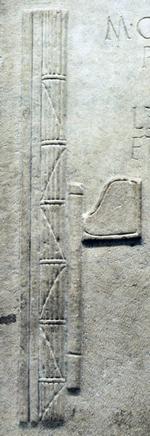Dictator
Q236885Dictator: Roman magistrate with extraordinary powers, appointed during an emergency. The word dictator originally meant "the one who dictates" or "gives orders". The negative connotation is a later development.

Rome's first dictator was Aulus Postumius Albinus, who was appointed in the first decade of the fifth century BCE, when the Latin allies revolted. This was a serious crisis and the Romans thought that only one man with extraordinary powers could solve the problems. This measure was successful and was sometimes repeated. A consul or (in emergency situations) praetor could appoint a dictator; this proposal could not be vetoed.
The dictator was more powerful than a consul, which was shown by the fact that he had twice as many bodyguards (24 lictores) - at least, this is what the Roman historian Livy seems to have said about the dictatorship of Sulla.note On the other hand, his magistracy lasted half as long: at most six months. It was impossible to appeal against the measures of the dictator. In fact, we can summarize his magistracy as a military potentate who briefly took over the government. This can also be deduced from his second title, 'master of the infantry' (his right-hand man was the 'master of the cavalry'). The Greeks correctly translated the title as strategos autokrator, 'military ruler', or even as monarchos.
In the fifth and fourth century, the dictatorship was also used to solve internal problems, e.g., to conduct difficult elections or solve a constitutional crisis. After 202, the dictatorship was abolished; in emergency situations, the Senate gave extraordinary powers to the consuls (the senatusconsultum ultimum, the proclamation of the state of emergency). When Sulla and Caesar became dictator (in the first century), their magistracy was nothing but a tool to exercise personal power.
Every year, the Romans appointed a dictator whose only task it was to fix a nail to the wall of the temple of Jupiter (the meaning of this ritual is unclear). One is reminded of the modern custom of King Carnival.